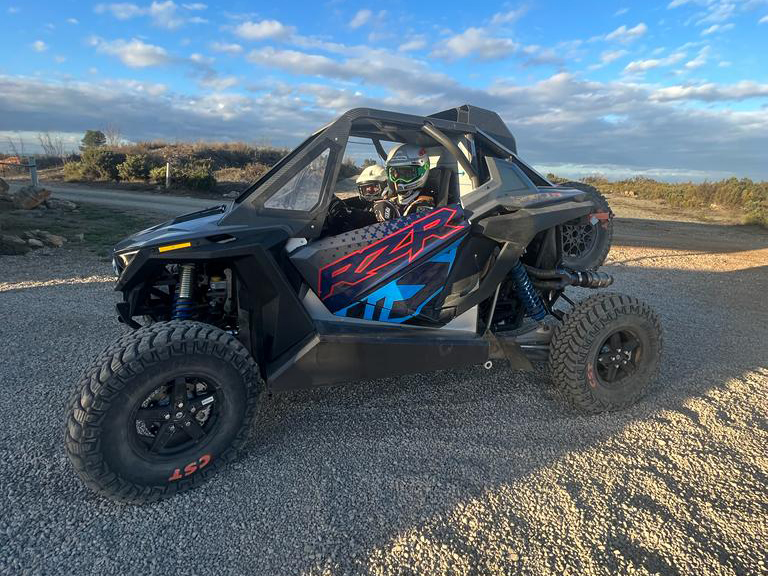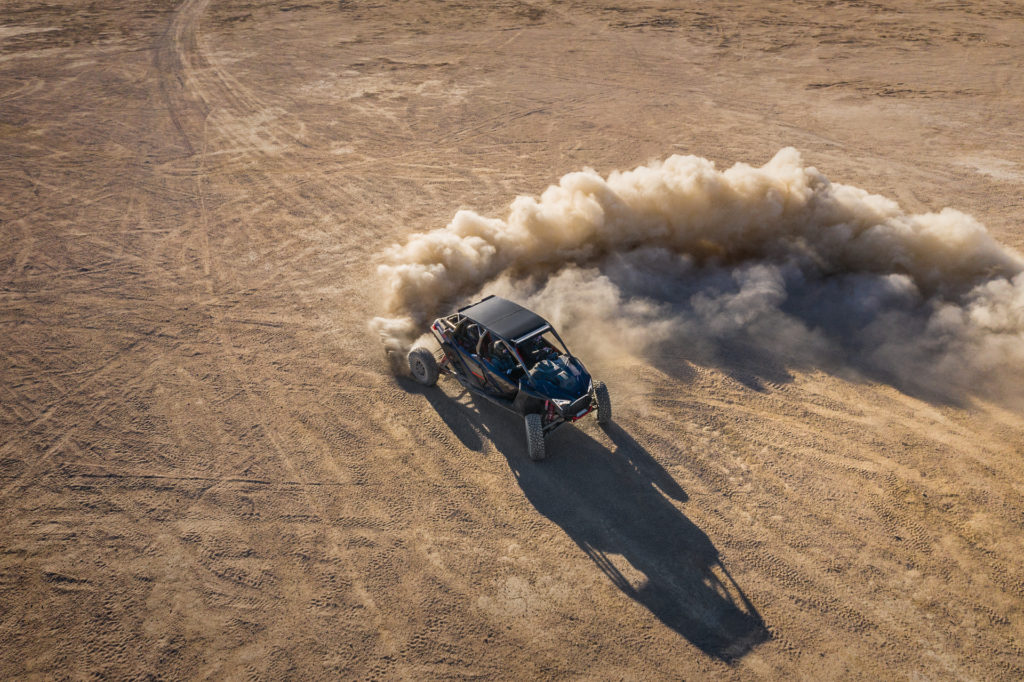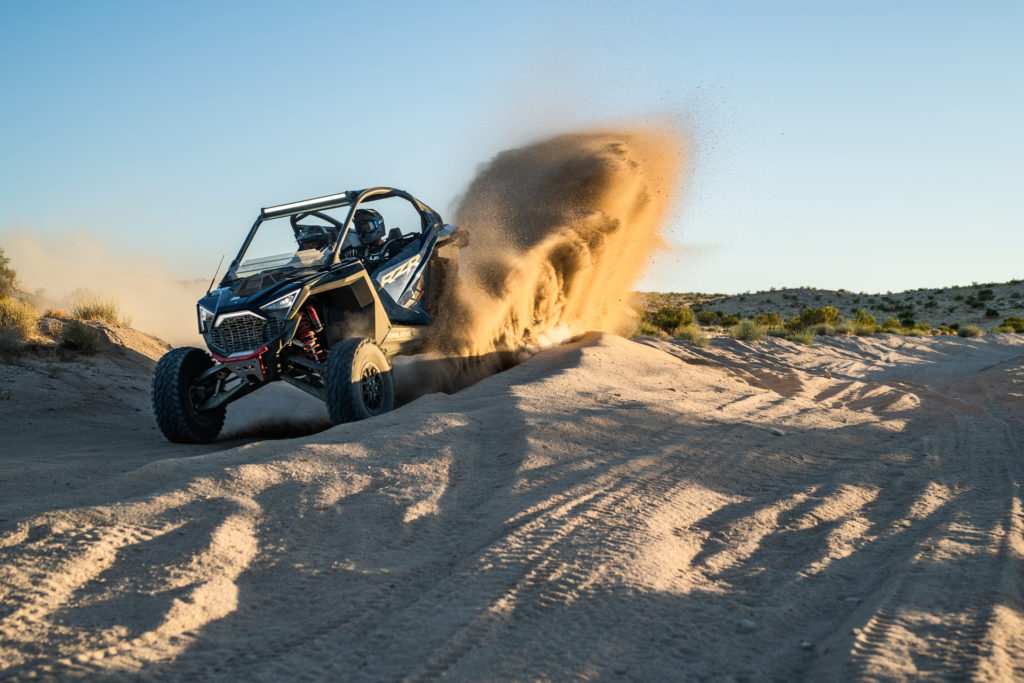

With six Polaris Pro R machines lined up to take to the start of the Dakar Rally in less than two weeks, the Xtremeplus squad is well prepared for arguably the world’s toughest race in Saudi Arabia. Marco Piana, Xtremeplus Team Owner, provides a closer insight into the technical aspects involved in the Polaris Pro R’s preparation for Dakar in the T4 class.
“We have developed a chassis that complies with FIA safety regulations. According to the rules, the driveline and mounting points for shock absorbers must remain the same, and we need to respect the exact size and dimensions of the original body – but we can change the materials to be more suited to the conditions of the race,” stated Piana. “Starting from scratch, we designed the roof together with the body, the cooling system, and the dashboard inside the car. This is the best option also in terms of safety because the safety cell, the roll bar, is included in the chassis.”
The new Polaris Pro R is built for the most demanding riders, rewriting the rules of side-by-side performance. Match that with the experience and skill of the French Xtremeplus team – who represents the Polaris factory on the Cross-Country Rally and Bajas.

“Aerodynamics plays an important role in racing,” Piana continues. “The shape of the Pro R, and the roof, are both already designed for optimal airflow, and of course, we need to respect the original size of the vehicle. We use carbon fiber from the original car body, and the rest must be made with aluminum because the conditions on the Dakar are so hostile that the light parts used in other types of racing just wouldn’t last the first kilometer. You need to find the balance between the weight and the strength of the parts.”
The good news for the team is that the new RZR is equipped with a 2000cc naturally aspirated engine, four cylinders, 16 valves, and 225 horsepower. It is already close to being race-ready straight from the factory, with modifications focused mostly on preparing the machine for survival throughout the 14 days and 9,300 miles of racing across in the toughest race on the planet.
“The side-by-side classes have power and speed limits imposed by the rule book. To compete in the T4 category, we need to put an air restrictor of 26mm to reduce the power to 170 horsepower and a speed limit of 125 kph,” Piana explains. “As we cannot touch the engine, we have developed the electronics to manage the power reduction. The ECU and the dashboard monitor all the important data that we need to know for the smooth and efficient running of the engine and the vehicle.”

Finishing a race is one thing, but to finish a multi-day rally, the vehicle needs to be taken to new levels. One thing they need to be is reliable.
“Reliability is key to winning a rally raid event. The racing machines run reinforced suspension, with added triangulation and bigger components. Our team’s preparation and maintenance are completed with the support of our valued technical partners – Donerre for suspension, CST for tyres, Emka for lubricants, and of course, Polaris.”
“The new Polaris Pro R is unique in the world of SSV, it’s aggressive and sporty”, continues Marco Piana. “Looking at the Dakar route, this new machine’s winning formula is its torque, its agility, and its huge suspension travel – ready to take on anything.”
The Dakar Rally kicks off in nine days and runs from December 31, 2022, to January 15, 2023. We can’t wait to see how the Polaris Pro R does in a competitive field.